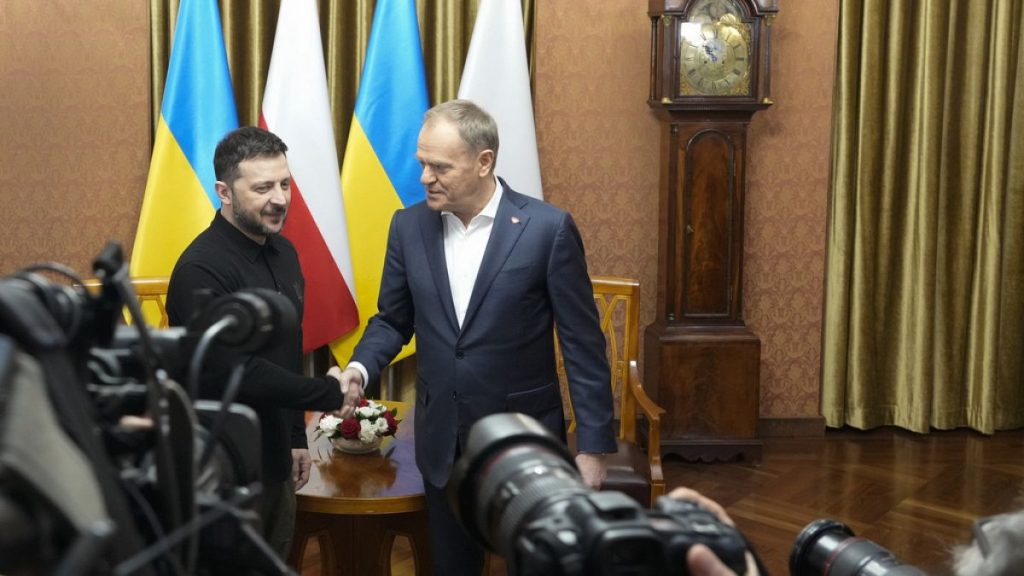Introduction: A Step Towards Healing and Reconciliation
Poland and Ukraine are embarking on a historic and sensitive mission to exhume the remains of victims of the 1943 Volhynia massacres, a painful chapter in their shared history. The initiative, agreed upon by officials from both countries, aims not only to uncover the truth about these tragic events but also to mend strained bilateral relations. The massacres, carried out by the Ukrainian Insurgent Army (UPA) during World War II, resulted in the deaths of an estimated 100,000 Polish civilians, as well as people of other ethnicities, including Armenians, Jews, Russians, Czechs, and Georgians. By addressing this dark period, both nations hope to foster mutual understanding and cooperation, paving the way for a brighter future in their relationship.
Historical Context: The Volhynia Massacres and Their Legacy
The Volhynia massacres, which occurred in 1943, were a series of brutal attacks carried out by the UPA, a Ukrainian paramilitary force that collaborated with Nazi Germany. The atrocities took place in the Volhynia and Eastern Galicia regions, then part of German-occupied Poland. The violence was part of a broader conflict fueled by ethnic tensions and competing nationalist ambitions. While Poland has officially recognized the massacres as genocide, Ukraine views the events as part of a more complex and multifaceted conflict, with shared responsibility on both sides. This divergence in historical interpretation has long been a point of contention between the two nations, casting a shadow over their otherwise strong alliance.
The Exhumation Process: A Joint Effort Toward Truth and Dignity
The exhumation process, set to begin in the spring of 2024, represents a significant step toward addressing the legacy of the Volhynia massacres. Polish and Ukrainian officials have been collaborating closely to organize the effort, with the first exhumation planned in the village of Puzhnyky, where a mass grave was discovered in 2023. A team of experts from both countries will work together to exhume the remains, conduct scientific research, and determine the causes of death. The process will also involve taking DNA samples to help identify the victims, providing closure to their families and loved ones.
Polish Minister of Culture and National Heritage Hanna Wróblewska emphasized the importance of this joint effort, stating that the collaboration must involve both nations working seamlessly together. Ukraine’s Ambassador to Poland, Vasyl Zvarych, echoed this sentiment, noting that the exhumation is not only about uncovering the past but also about building a foundation for future cooperation. While the exact timeline for the exhumations is still being finalized, officials hope to begin in April, with public communication about the process planned through official channels.
The Significance of the Exhumations: Healing Old Wounds
The exhumations are not just a practical step toward uncovering the truth; they are also a deeply symbolic act of reconciliation. For decades, the Volhynia massacres have been a source of tension between Poland and Ukraine, with each country holding differing interpretations of the events. By working together on this initiative, both nations are demonstrating a willingness to confront the past and move forward.
The effort is also a testament to the enduring importance of dignity and closure for the victims and their families. Providing a proper burial and respectful commemoration for those who lost their lives is a fundamental human act that transcends political or historical disputes. officials hope that this process will help to reduce long-standing tensions and create a shared understanding of the past, fostering mutual respect and empathy between the two nations.
The Role of Science and Research in the Exhumation Process
Beyond the emotional and symbolic significance of the exhumations, the process will also involve rigorous scientific research. Teams of experts from Poland and Ukraine will work together to analyze the remains, taking DNA samples to identify the victims and determine the causes of death. This work will not only shed light on the circumstances of the massacres but also provide valuable insights into the broader historical context of the region during World War II.
The involvement of organizations such as Poland’s Institute of National Remembrance (IPN) and the Pomeranian Medical University in Szczecin ensures that the exhumation will be conducted with the highest level of professionalism and respect. By combining historical research with scientific analysis, the initiative aims to create a comprehensive and accurate record of the events, one that will serve as a foundation for future dialogue and understanding.
Moving Forward: A New Chapter in Polish-Ukrainian Relations
While the exhumation process is just beginning, it represents a significant milestone in the journey toward reconciliation between Poland and Ukraine. officials on both sides have expressed optimism that this joint effort will help to improve bilateral relations and pave the way for further collaboration.
Polish Minister of Culture and National Heritage Hanna Wróblewska has called for patience and understanding, urging both sides to avoid sensationalism and manipulation. Ukrainian Ambassador Vasyl Zvarych has similarly emphasized the importance of good faith and cooperation, noting that the success of the exhumation process will depend on the commitment of both nations to work together.
As the teams prepare to begin their work, the hope is that this initiative will not only uncover the truth about the past but also lay the groundwork for a more harmonious and collaborative future between Poland and Ukraine. The Volhynia massacres may have left deep scars, but through shared effort and mutual respect, both nations are taking a crucial step toward healing.












